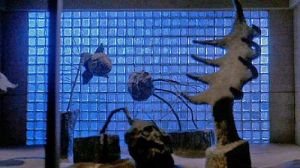
I am, and always will be, a fan of art, both as an observer and in practice. I’m an artist myself, one who chooses to express my proclivity through many mediums. These days writing is my main outlet, but I do have a painting and drawing studio in my home, one filled with all kinds of resourceful tools; too many, in fact. My collection is so extensive I had to buy a large upright rolling toolbox in place of a traditional taboret. I own a few easels as well as an ancient drafting table along with its traditional accoutrements. In paintbrushes alone I hoard over two hundred, and I have stacks of various art pads and canvases. I must admit, however, that my amateur skills in this area have waned as I have grown older, and admittedly, lazier. Most of the time they collect dust, but at least they are there when the mood strikes.
Often, when I mention a personal inclination and enthusiasm towards an artistic frame of mind, many of my colleagues will, without hesitation, deny that they have the same tendencies. While I’m hesitant to call anyone a liar, they are, in fact, totally incorrect. The stereotypical and shallow-minded definition of art is not limited to the contents of museums, libraries, and concert halls, it literally saturates our surroundings, and this includes all things both man-made and natural.
The inability or unwillingness to recognize this in everything is a subconscious attitude of apathy towards the world. This choice robs us of a connection from spirit (or imagination) to manifestation, and without this frame of mind, all the work we do becomes nothing more than programming and drudgery. It’s important to point out that almost all of us were, as children, deeply involved in all kinds of artistic activities. Crayons and glue, clay, colored paper and paper airplanes, coloring books and paint were associated with leisure and fun. So was singing, pretending, and looking for dragons in the clouds. This is because we were still connecting to the world from the inside out rather than the outside in. We wanted to reach out to everything at one point and make it blossom, but for many the reverse eventually happens and sadly, we decide our efforts are a waste of time. Instead of creating the rain that makes things grow, we choose to believe it’s better or easier to wait for the right conditions to come to us. We want reward without action, not realizing the reward IS the action. Everyone has an inner garden, and while some have ignored or neglected theirs, they can always be revived to a point of flourishing if properly attended to. The seeds of creativeness may lie dormant, but they are never nonexistent.
Passionate expression isn’t just a personal pursuit, it is an enviable one, meaning the person who’s best at envisioning and subsequently producing something, can often be an inspiration to others. This action radiates magnetism and demands an audience. Not only that, the process is transferable. It can be consciously shifted into other, unexplored, or unconsidered areas. For example, if a person is an expert at restoring cars, there’s no reason this obsessive energy can’t be refocused into becoming a skillful cook.
They say practice makes perfect. This clichéd saying is its own dichotomy. If practice makes perfect, then the time will come when practice is no longer necessary, and since perfection is both unattainable and highly subjective, then practice is a waste of time to begin with. Personally, I don’t like the word practice. It’s been my experience that the Pavlovian response to the (covert) definition can stir up connections to previously perceived failures, and in turn it can lead to disenchantment and negative outcomes. I feel the word persistence is much more productive and positive. The vernacular may be subtle, but the consequences are obvious. The road of persistence is about the journey, and the only goal is to make the journey itself more and more pleasant.
And so we come to the idea of art in practical applications, not just as an occasional emotional outlet, but as an extension of everything we do. If we allow our inner spirit to influence outer actions, we reinforce purpose. If we apply an artistic frame of mind to most duties they’ll cease to be strictly motivated by gain and eventually become driven by how we deliver them. The side benifit is people will ALWAYS be willing to pay more for that which is done with an attention to detail and a disposistion for beauty. Gain (or profit) then becomes automatic. If we find a way to anchor enjoyment to our responsibilities, then does it not become a habit we want to repeat and enhance? With practice all movement becomes dance, all words become poetry, all we touch becomes sculpture, all we hear becomes music, and all we see becomes one vast painting.
Please follow my blog. Comment and share as you wish.
With Love and Compassion, Daniel Andrew Lockwood
PHENOMENAL and beautiful article!! Will save and re-read and share when time allows. XO Lydia
If all you did was just look for things to appreciate, you would live a joyous, spectacular life.
Godshots®️ Godshots.org https://godshots.org/
Godshots is a Registered US and International Trademark.
>
LikeLiked by 1 person